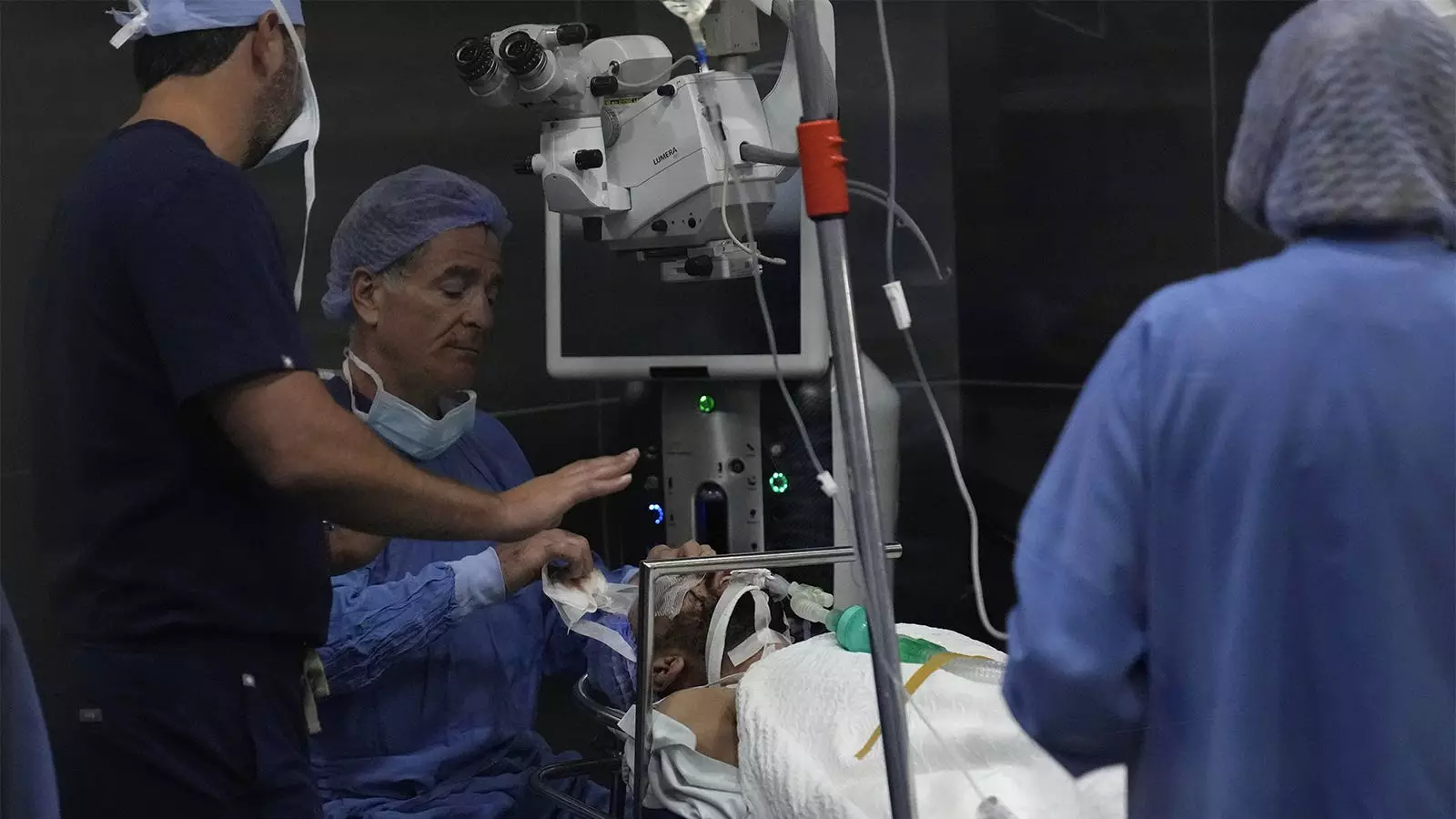In the wake of a catastrophic incident that has left Lebanon reeling, the urgent cries of victims resonate across hospital wards. For a full week, the relentless efforts of ophthalmologist Elias Jaradeh portray the stark reality faced by medical professionals as they grapple with an unprecedented influx of eye injuries. As pockets of chaos erupted throughout the country, the unintentional victims of mass explosions resulting from detonated pagers and walkie-talkies became a grim statistic. The hard facts are alarming: at least 39 lives lost, around 3,000 individuals wounded, and many suffering irreversible damage. Eyewitness accounts and medical reports alike suggest a uniquely tragic exposure for the youth, particularly young men, children, and women who found themselves at the epicenter of these violent detonations.
The very nature of the explosions suggests a calculated attack, with Israel widely suspected of orchestrating these events, although it remains tight-lipped regarding its involvement. Yet the real victims are civilians, caught in the turmoil of a conflict that thrusts innocent lives into its vicious crosshairs. One chilling detail emanating from the incident is the notion that these individuals were struck down merely by glancing at their devices — initially benign tools that turned into lethal instruments in an instant.
Dr. Jaradeh’s experience reveals the emotional turmoil that medical professionals endure in the face of overwhelming tragedy. Despite his substantial training and experience dealing with casualties from prior conflicts, such as the devastating Beirut port explosion, the sheer scope of casualties from this recent crisis has shaken even seasoned professionals. The doctor’s dedication is evident as he relays the gut-wrenching experiences of performing countless operations, often surviving on scant hours of sleep to care for the endless queue of patients. The presence of plastic and metal shrapnel embedded in the eyes of these young victims starkly illustrates the devastating effects of modern warfare — a blend of technology and destruction that changes lives forever.
Moreover, Dr. Jaradeh’s dual role as a lawmaker and an ophthalmologist adds complexity to his situation. He must grapple with the societal implications of such violence on top of the immediate medical care he provides. His sentiments resonate profoundly as he states, “This is linked to a war on Lebanon and war on humanity.” This poignant insight reveals the intersectionality of his work and the broader socio-political issues that plague Lebanon.
Lebanon’s healthcare system, already strained from years of conflict and civil unrest, now faces a significant test as it responds to this latest crisis. The deluge of patients overwhelming hospitals raises questions about the sustainability of healthcare responses within a nation long on the brink. Veteran eye doctors, seasoned by experience yet perplexed by the current crisis, have insisted that the volume and nature of injuries presented by this latest incident were unprecedented. The community’s resilience is put to the test, as ordinary citizens support healthcare workers, offering whatever assistance they can to contend with the influx of need.
The broader ramifications of the tragedies extend beyond the immediate victims. Families, communities, and even entire neighborhoods feel the physical and emotional ripples of such violent occurrences. The agony of watching loved ones endure debilitating injuries, particularly young individuals deprived of their sight, reverberates throughout society. Individuals trained for quick reactions find that sympathy and compassion become essential tools in their vocational arsenal.
Hope Amidst Despair: The Role of Community and Compassion
Despite the overwhelming sentiment of despair that saturates the air in Lebanon, threads of hope emerge through collective action and empathy in the face of tragedy. Community organizations spring into action, providing psychological support to both victims and medical professionals grappling with the insurmountable emotional load. The healing process is as much about community solidarity as it is about physical rehabilitation; it is a testament to the enduring spirit of individuals who weather storms together.
The repercussions of the recent explosions in Lebanon stretch far beyond the immediate casualties. They present a profound commentary on the implications of violent conflicts that target civilians in a turbulent landscape. As medical professionals like Dr. Jaradeh navigate the grim realities of care, society collectively must grapple with the harsh truths of ongoing strife and its toll on humanity. The need for healing—physical, emotional, and communal—will be crucial in navigating the aftermath of violence, serving as a reminder of resilience and shared humanity in a time of unprecedented hardship.


Leave a Reply